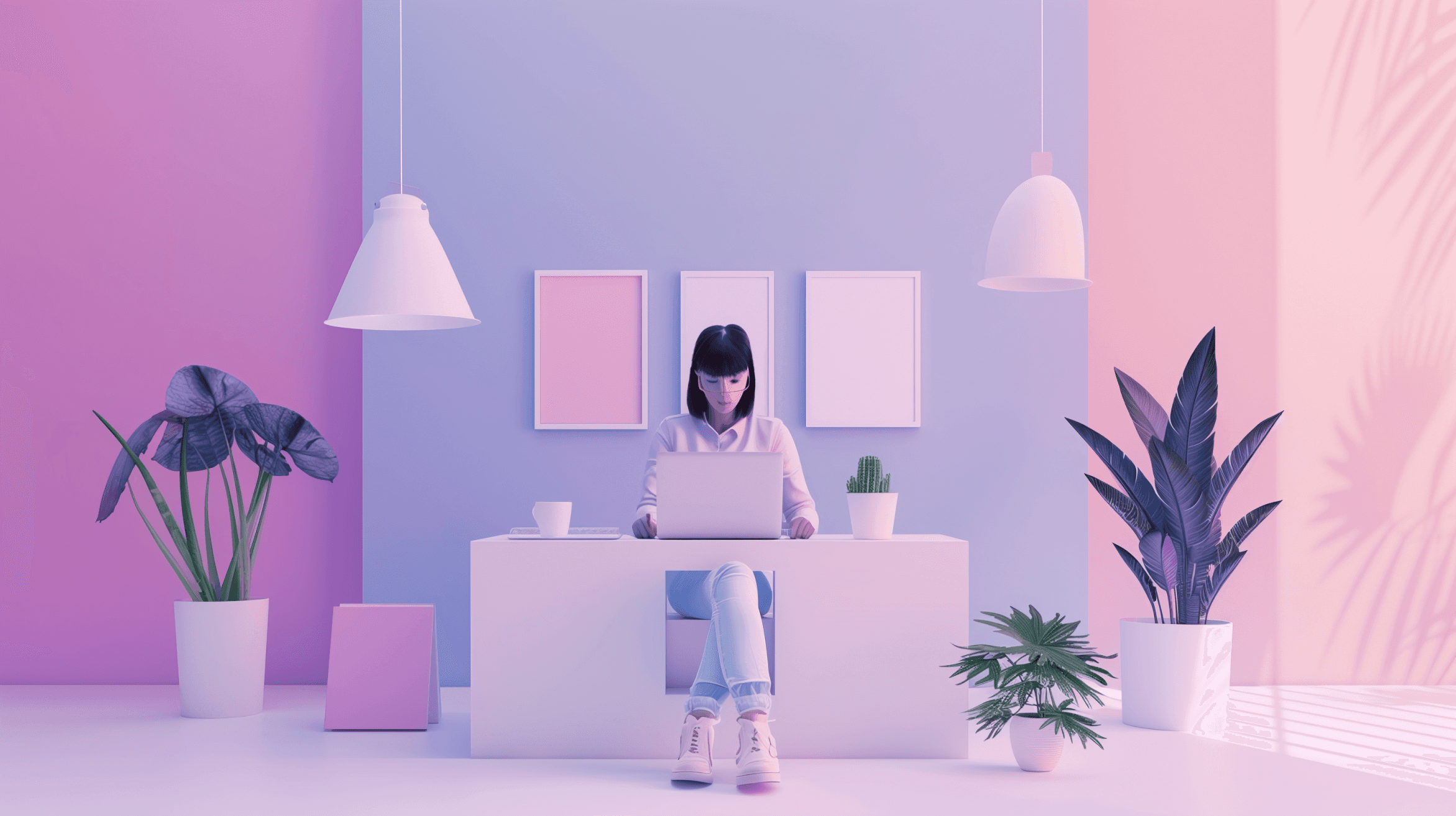
Jul 4, 2024
Trends in UI/UX Design for 2024: What to Watch For
As we venture into 2024, the landscape of UI/UX design continues to evolve at a rapid pace. With advancements in technology, shifts in user expectations, and emerging design philosophies, it's crucial for designers and businesses alike to stay ahead of the curve. Here’s a deep dive into the key trends shaping UI/UX design this year:
1. Immersive Experiences with AR/VR
Augmented Reality (AR) and Virtual Reality (VR) are no longer just buzzwords; they’re becoming integral to user experiences. In 2024, expect to see a significant rise in immersive experiences that blend the digital and physical worlds.
AR: From interactive shopping experiences to enhanced navigation, AR is making everyday interactions more engaging and informative. Think of virtual try-ons for fashion or furniture, where users can visualize products in their own space before making a purchase.
VR: VR is pushing the boundaries of digital experiences, especially in fields like gaming, education, and real estate. Virtual tours and training simulations are becoming more sophisticated, offering users a fully immersive experience.
2. Conversational UI and AI Integration
Conversational User Interfaces (CUIs) powered by artificial intelligence (AI) are revolutionizing how users interact with digital products. In 2024, AI-driven chatbots and virtual assistants will become even more intuitive and context-aware.
Personalization: AI will enable more personalized interactions, tailoring responses and recommendations based on user behavior and preferences. Expect chatbots that understand and predict user needs with greater accuracy.
Voice Interfaces: Voice commands are becoming more prevalent. Designing for voice interaction requires a shift towards natural language processing and conversational design to ensure a seamless user experience.
3. Minimalist and Functional Design
The trend towards minimalism continues to gain momentum. In 2024, expect a heightened focus on simplicity and functionality in UI design.
Decluttered Interfaces: Designers are opting for clean, uncluttered interfaces that prioritize essential elements and improve user focus. This approach enhances usability and accessibility, making it easier for users to navigate and interact.
Functional Aesthetics: The emphasis is on designs that not only look good but also serve a clear purpose. Functional aesthetics ensure that every design element contributes to the overall user experience.
4. Microinteractions and Animations
Microinteractions are small, subtle animations that provide feedback and enhance user engagement. In 2024, expect these tiny details to play a significant role in creating a more dynamic and interactive user experience.
Feedback and Guidance: Microinteractions offer visual feedback for user actions, such as button clicks or form submissions. They help guide users through tasks and make interactions feel more responsive and satisfying.
Enhanced Engagement: Thoughtfully designed animations can capture user attention and create a more enjoyable experience. From loading indicators to hover effects, microinteractions add a layer of polish to UI design.
5. Dark Mode and Themed Interfaces
Dark mode has become a staple feature in many applications, and it’s expected to continue its rise in popularity in 2024.
User Preference: Dark mode is not only a trend but a user preference that reduces eye strain and saves battery life on OLED screens. Designers are focusing on creating aesthetically pleasing dark themes that complement the user experience.
Themed Customization: Beyond dark mode, themed interfaces allow users to customize their experience. Offering different color schemes and visual styles can enhance user satisfaction and engagement.
6. Advanced Accessibility Features
Accessibility is no longer a secondary consideration; it’s becoming central to design thinking. In 2024, there will be a stronger emphasis on creating inclusive and accessible digital experiences.
Enhanced Tools: New tools and technologies are emerging to assist designers in creating more accessible interfaces. This includes improved color contrast analyzers and screen reader compatibility.
Inclusive Design: The focus is shifting towards designing for a diverse range of abilities and preferences. This includes incorporating features like voice commands, adjustable text sizes, and easy-to-navigate layouts.
7. Data-Driven Design
Data-driven design is making waves as designers increasingly rely on user data and analytics to inform their decisions.
User Insights: Analyzing user behavior and feedback helps designers create more effective and user-centric interfaces. Data-driven insights lead to more informed design choices and continuous improvements.
Predictive Analytics: Leveraging predictive analytics can help anticipate user needs and preferences, enabling a more proactive approach to design. This includes personalization and recommendations based on user patterns.
8. Sustainable and Ethical Design
As awareness of environmental and ethical issues grows, sustainable design practices are gaining traction.
Eco-Friendly Choices: Designers are exploring ways to reduce digital waste and optimize performance to minimize energy consumption. This includes optimizing assets, reducing data usage, and considering the environmental impact of design decisions.
Ethical Considerations: Ethical design involves creating user experiences that respect privacy, avoid manipulation, and promote positive engagement. Transparency and user trust are key considerations in this approach.In conclusion, 2024 promises to be an exciting year for UI/UX design, with innovative trends shaping how users interact with digital products. Staying abreast of these trends and integrating them thoughtfully into your design practice can help you create more engaging, effective, and user-centric experiences.